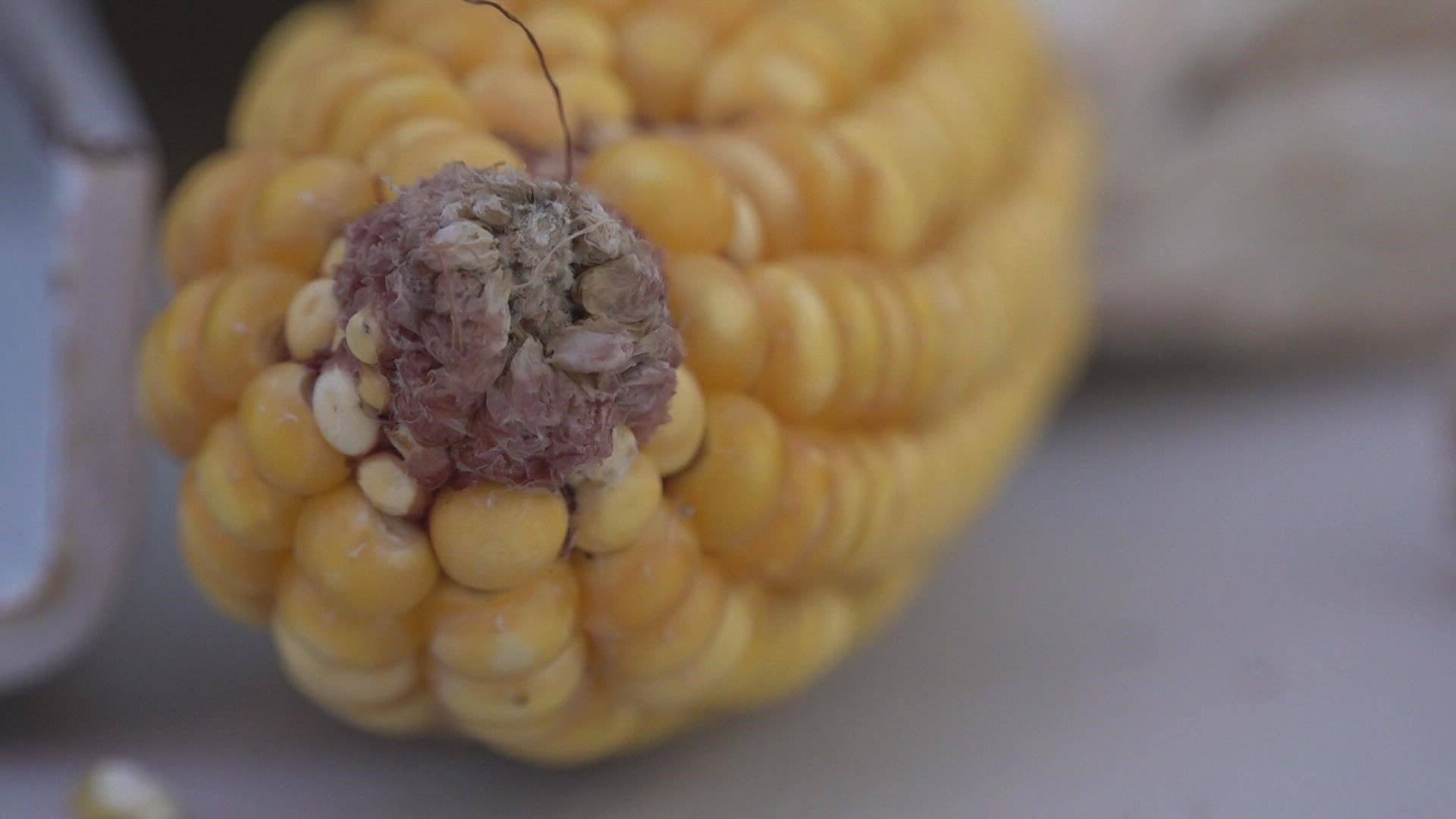SWEETWATER, Tenn. — As David Richesin harvests the corn he planted on his farm, he said this year, he has smaller margins than he did last year.
It costs about double to produce corn, Richesin said. But corn sale prices have only increased by 20-25% year over year.
Input and output prices are set by the world market, and uncertainty in Russia and Ukraine has driven fertilizer prices higher.
"We have a tremendous amount of the fertilizers that's produced overseas," Richesin said.
Added to the higher input prices, drought has affected farmers in Tennessee. Richesin said he's lucky, the drought on his farm was not too bad. But 15 minutes away, John Goddard, a UT researcher was studying a farm that had about half of the expected yield because of the drought.
"The soil right here is absolutely powder dry," Goddard said. "Normally we'd have a 12-14 inch ear and it's just a little nub."
Goddard said the farm in Philadelphia, Tenn. didn't have enough rain during the pollination period, usually late June and early July, so the ears didn't grow enough kernels.
Drought affected most corn crops in Middle and West Tennessee, where all of the crops look like the ones Goddard studies in Philadelphia.
"You can do everything perfect and still fail because it's up to the Lord with the rainfall," Richesin said.
He said if farmers aren't able to produce as much corn, because of weather, the price of everything will go up.
Most of the meat people buy is fed by corn, most of the gas people fill their cars with has ethanol, a corn byproduct, and most of the snacks and drinks people buy at the store are sweetened with corn syrup.
"You're walking on corn, you're eating corn and you're driving on corn," Richesin said.

